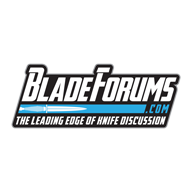When talking about a finished product, there are a few more things involved than just steel as a material, so it's not that simple to compare.
My understanding is that you pay (or should pay) mostly for the quality control of a certain steel, as in better heat-treatment / appropriate beveling to be in par to the steels characteristics, which would normally take the steel performance at the desired level.
(take TOPS for example..their prices are not really cheap and they mostly use 1095. What you get is the guarantee that you get everything out of the certain steel)
And if a company chooses to grind the bevels on their knives after heat-treat, then there's the extra cost on the workshop's consumables and the extra time required to get the job done (abrasives, electricity, employers' time, the knifemaker's expertise on dealing with the certain steel...).
Another point, is that some of these super steels' heat treatment requires higher temperatures and maybe more tempering cycles than a cheaper steel.
Also, another factor would be the hype connected to a steel as soon as it comes out (3V / M390 / Magnacut are just a few examples that pop to my mind). So, in this sense, you also pay for what a steel can be and how new it is, but not necessarily for what it is.


